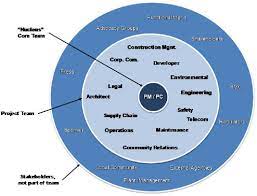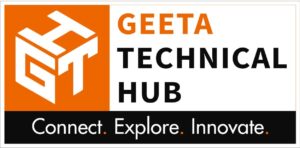
Effective group project management strategies for student teams
Students frequently participate in group projects as part of their academic experience. These projects provide students with the opportunity to work together, exchange ideas, and acquire essential skills in cooperation. Managing group projects, on the other hand, can be difficult, with problems ranging from failures in communication to unequal participation. Students are required to implement efficient project management tactics in order to guarantee the fruitful completion of group projects. Within the scope of this article, we will investigate major strategies that have the potential to improve the efficiency and accomplishments of student teams.
Establishing Expectations and Communicating Clearly
An effective means of communication is one of the essential foundations that support the successful management of group projects. From the very beginning, it is essential to establish open lines of communication in order to guarantee that all members of the team are on the same page with regard to the project’s objectives, timetables, and individual responsibilities. In order to ease the sharing of information in a timely manner, you should establish a platform that allows for regular updates, such as a group chat or a programme for managing projects.
In addition to this, it is essential to establish clear expectations. Define the parameters of the project, the roles that each individual will play, and the standards for success. In addition to preventing scope creep, having a clearly defined project scope also assists members of the team in comprehending the limits of their tasks, which in turn helps to encourage a more effective workflow.
Make use of the tools for project management.
Utilising technologies for project management in this day and age can substantially simplify the process of working together among individuals. Trello, Asana, and Slack are examples of platforms that offer tools that enable users to assign tasks, track progress, and share files. With the help of these technologies, transparency and organisation are improved, and members of the team are able to remain informed about the progress of the project and the deadlines.
In order to keep track of progress, you should assign assignments with deadlines and use these tools. Ensure that task boards and calendars are regularly updated to accurately reflect the current status of the project. By centralised the project information, members of the team are able to easily access papers that are pertinent to the project and remain updated about the general timetable of the project.
You should create a team charter.
In order to take preventative measures against possible conflicts and to foster an atmosphere of harmony in the workplace, the creation of a team charter is an important step. A team charter is a document that specifies the guiding principles, values, and purpose of the team. It is important to discuss and establish the process by which the team will handle individual duties, manage issues, and make decisions overall.
During the process of developing the charter, it is important to encourage open communication in order to guarantee that everyone’s opinion is taken into consideration. When difficulties develop, looking back to the team charter gives a framework for resolving issues in accordance with the rules that have been agreed upon. This helps to foster a sense of accountability and fairness among the members of the team.
Feedback and Check-Ins on a Regular Basis
Making sure that regular check-ins are maintained throughout the lifecycle of the project is essential in order to identify and handle possible problems at an early stage. For the purpose of discussing accomplishments, issues, and impending tasks, you can either schedule brief team meetings or use online collaboration tools. The purpose of these check-ins is not only to create a forum for the resolution of issues, but also to foster a sense of unity among the members of the team.
It is important to create a feedback loop inside the team in addition to doing regular check-ins. Motivate individuals and groups to provide and receive constructive feedback on their performance. This free flow of feedback encourages continual improvement by providing members of the team with the opportunity to modify and improve their contributions based on the feedback they get from their colleagues.
Encourage participation on an equal basis
For any group project to be successful, it is essential to make sure that every member of the team is actively contributing to the project. It is important to build a culture of inclusivity from the very beginning in order to ensure equal participation. In the course of talks, encourage members of the team who are more reserved to share their thoughts and views. Make sure that every member of the team has the opportunity to take on leadership responsibilities by utilising rotating positions within the team. This will ensure that the responsibilities are distributed equitably.
It is important to incorporate collaborative tools that enable simultaneous editing of documents. This will ensure that every member of the team has the opportunity to actively participate in moulding the content of the entire project. Student teams have the ability to harness the collective wisdom of the group, which ultimately results in a project that is more robust and well-rounded. This is accomplished by cultivating an environment in which every voice is appreciated.
Addressing Conflicts in a Professional Manner
Conflicts are unavoidable in group initiatives; nonetheless, the manner in which they are resolved can have a considerable impact on the dynamics of the team as well as the overall success of the endeavour. Promoting an open discourse about potential problems and highlighting the significance of addressing issues as they come up is something that should be encouraged. There is a framework for managing differences in a constructive manner that may be established by establishing a method for conflict resolution inside the team charter.
When disagreements do occur, it is important to approach them with a mindset that is focused on finding solutions. The members of the team should be encouraged to voice their issues and viewpoints, and they should collaborate in order to discover solutions that will agree with all parties involved. For the purpose of preventing problems from becoming more serious and improving the team’s capacity to work together efficiently, a proactive approach to conflict resolution is recommended.
Establish Deadlines and Milestones That Are Realistic
An essential component of good project management is the ability to effectively manage one’s time. Establish reasonable due dates for each of the project’s milestones, and break the project down into smaller, more manageable chunks. Taking this strategy not only helps the team avoid procrastinating and rushing at the last minute, but it also gives a roadmap for the team to follow.
For the purpose of monitoring progress and locating potential bottlenecks, you might want to think about utilising tools like Gantt charts that allow for the visualisation of project schedules. At regular intervals, during check-ins, evaluate the work that the team has made in relation to these milestones, and make any necessary revisions to the timeframe. When the team is able to achieve its goals, they are more likely to remain engaged and motivated throughout the duration of the project.
Observe and Honour Successes While Taking Lessons from Difficulties
Recognising and celebrating accomplishments, no matter how big or how small, is an important part of developing a positive culture within a team. Give credit to both individual and group efforts, noting the milestones that have been attained and the goals that have been accomplished. The members of the team are motivated to continue working on the project and feel a feeling of success when they participate in celebrations.
The ability to gain knowledge from difficulties and failures is also very significant. Instead of viewing challenges as failures, urge the team to think of them as chances for growth and reframe their perspective accordingly. During the meetings of the team, discuss the plans for improvement as well as the lessons that were learnt. The members of the team are more likely to be resilient and to have a culture of continuous development when they use this introspective attitude.
Case studies are examples of how effective group project management strategies can be applied in real-world situations.
Case Study 1: The Challenge Present to Engineering Innovation
Within the context of an engineering innovation competition, a group of students was tasked with the responsibility of developing a sustainable energy solution for a community to use. Through the use of a comprehensive project charter, clear communication and understanding of expectations were developed. The roles and duties of each member of the team were clearly defined, which ensured that each individual had a particular area of knowledge to contribute to the team.
The utilisation of tools for project management was an essential component in the process of coordinating the activities of the team. A visual task board that detailed the various phases of the project as well as the deadlines for each phase was created with the help of Trello. Video conferencing solutions were utilised to facilitate regular check-ins, during which progress was discussed, difficulties were addressed, and resources were distributed in an efficient manner.
Through the use of a rotating leadership structure across the many phases of the project, equal participation was fostered. Because of this, not only was it guaranteed that every member of the team actively engaged, but it also offered opportunity for the development of expertise. The group was able to effectively develop a prototype, and the collaborative approach they took meant that they were able to come up with a comprehensive solution that got them acclaim in the competition.
Marketing Campaign for a Nonprofit Organisation is the Subject of the Second Case Study
Within the context of a marketing course, a group of students was tasked with developing an all-encompassing marketing campaign for a specific local charitable organisation. Establishing a team charter that outlines the aim of the campaign, key principles, and criteria for decision-making was one of the things that was done. During times of contention, this charter served as a point of reference, thereby fostering an atmosphere of harmonious collaboration and respect in the workplace.
Slack was used for providing instant updates, and Asana was used for managing tasks, so that the team could better communicate with one another. Establishing targets and goals that were attainable helped to guarantee that the campaign moved along without any hiccups. The team was able to accurately see the schedule of the project through the utilisation of Gantt charts, which enabled them to identify any potential delays and change their strategy accordingly.
For the purpose of proactively addressing conflicts, the team had frequent feedback sessions in which they discussed individual contributions and addressed any problems that may have arisen. In order to enhance the spirit of the team, celebrating milestones such as reaching fundraising targets was beneficial. The success of the campaign not only helped the nonprofit organisation, but it also offered the students with opportunity to get significant experience in the use of excellent project management tactics in a context that is relevant to the real world.
Case Study No. 2: A Research Project That Involves Multiple Disciplines
Students from a wide range of academic backgrounds worked together on a research project that was interdisciplinary in nature in order to address a complicated problem that was facing society. A charter for the team was developed in order to set clear objectives and ground rules, which helped to cultivate a sense of shared purpose. A combination of video conferencing, collaborative document editing, and a shared project repository were utilised in order to make communication easier.
The group decided to develop a mentorship system in order to promote equal participation. This method allowed more experienced members to provide assistance to members who possessed less skill in particular areas. The regular check-ins included conversations on the incorporation of a variety of disciplines into the research as well as reports on the progress that had been made.
To guarantee consistent advancement, attainable benchmarks were established. During brainstorming meetings, the team utilised a blend of conventional tools for project management as well as individualised alternatives, such as collaborative mind mapping. The team altered their study methods depending on feedback and unexpected findings, so gaining knowledge from the difficulties they encountered.
Concluding remarks:
In order for student teams to successfully traverse the complexity of collaborative work, it is vital for them to have effective group project management. Students have the ability to improve their teamwork abilities and assure the effective completion of group projects by placing an emphasis on clear communication, making use of tools for project management, drafting a team charter, and implementing regular check-ins and feedback. We are going to go deeper into each of these methods in the following sections, giving student teams with practical advice and examples to lead them towards success in project management.
It is necessary to take a comprehensive strategy in order to effectively manage group projects for student teams. This approach should include communication, teamwork, dispute resolution, and time management. Student groups are able to confidently negotiate the intricacies of group projects if they place equitable participation as a priority, proactively handle problems, establish milestones that are realistic, and celebrate achievements.
Within the concluding portion of this essay, we will investigate real-life case studies and success stories that highlight the implementation of these tactics in a variety of academic environments. In order for students to acquire vital insights into how these techniques might be changed and used to achieve success in their own group projects, it is possible for them to receive these insights by diving into practical examples.
In the following pages, we will give case examples from several disciplines, showcasing how effective group project management practises have led to good outcomes. In the end, students will improve their project management skills and contribute to good academic outcomes as a result of these examples, which will provide students with practical insights and inspire them to implement similar approaches in their collaborative endeavours.
The purpose of these case studies is to demonstrate how effective tactics for managing group projects may be practically used in a variety of academic settings. Clear communication, equal involvement, proactive dispute resolution, and realistic time management were the critical factors that contributed to the success of these teams in a variety of endeavours, including technical problems, marketing efforts, and research that cut across disciplines.
Students can build vital teamwork skills, improve their ability to manage the intricacies of group projects with confidence, and make meaningful contributions to their academic and professional development if they adopt these tactics and put them into practise. The lessons that students have acquired from these case studies serve as significant insights into the application of good group project management practises. This is because students will continue to experience collaborative projects throughout their academic path.

Geeta Technical Hub
Related Posts

Team building activities for student groups: fostering collaboration and corporations
Team building activities for student groups: fostering collaboration and corporations In the ever-changing educational landscape, it is absolutely necessary to encourage students to work together
Crafting an Effective College Timetable: A Blueprint for Success
Introduction: Time management is a crucial skill for college students, as the demands of academic life, extracurricular activities, and personal responsibilities can be overwhelming. One

To be a Civil Engineer one must know – Geeta University
Civil engineering is in high demand for work. Working in this field requires very clear skills. It is not easy to find a great civil


